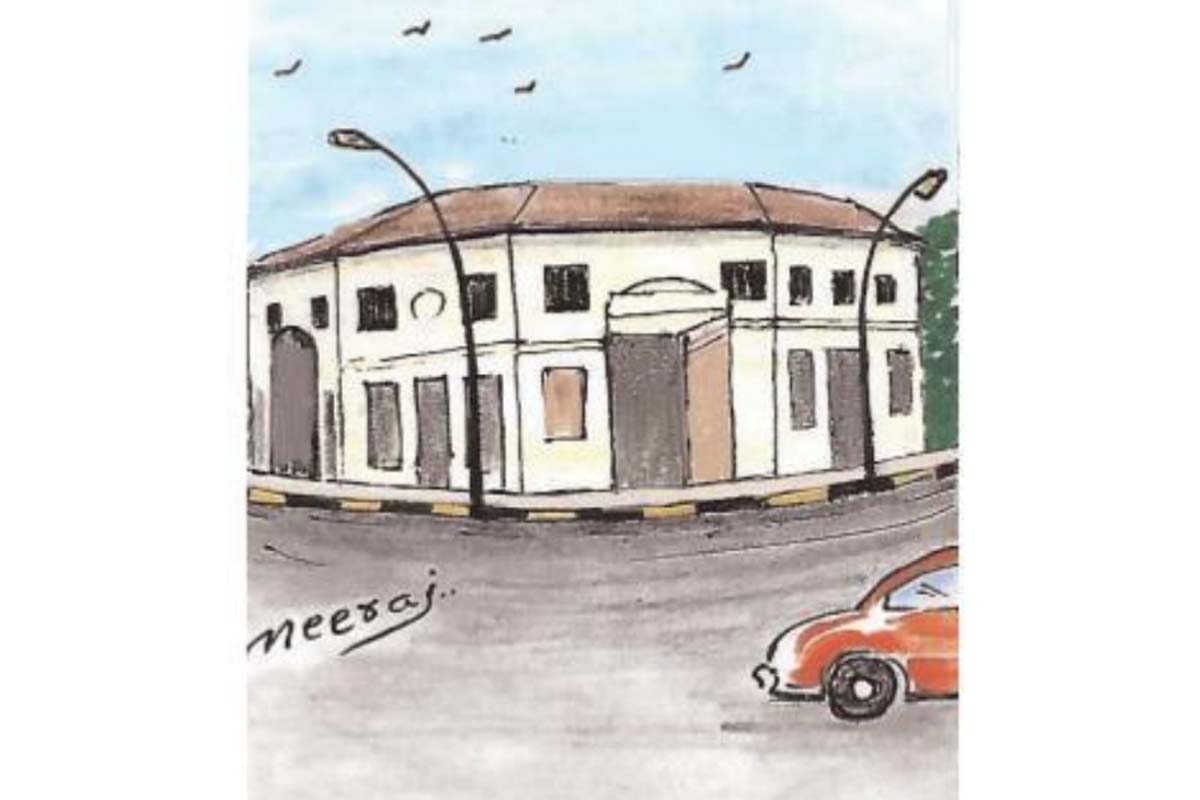Fire at multi-story building in Delhi’s Connaught Place
Luckily no one is reportedly hurt in the incident as the blaze was brought under control within 2.10 minutes of commencing the fire fighting.
Last heard, the matter is now embroiled in court cases, even as the dilapidated structure stands as a mute witness to its centuryold glorious history.

The octagonal Gole Market building, designed by Sir Edwin Lutyens and built in the year 1921, was originally named Market Place and stood on the traffic roundabout which connected it to Gol Dak Khana,
Connaught Place, Panchkuiyan Road and Mandir Marg (formerly Reading Road). It was one of New Delhi’s oldest surviving colonial markets, till even less than a decade back, and was built as a daily shopping centre to cater to the government servants who worked in the Central Secretariat.
Advertisement
These employees, originally uprooted from the Bengal and Madras Presidencies, were relocated from the Civil Lines area at least a decade before the formal inauguration of the Capital in New Delhi in 1931 and were accommodated in the threeroomed tenements comprising various “Squares” in the vicinity of Gole Market, which was also called the Delhi Improvement Zone (DIZ area).
Advertisement
These “Squares” were, understandably, named after Dalhousie, Outram, Taylor, Albert, Diaz, Pershing, Foch, French, Baird, Nicholson, Lake, Haig, Havelock, et al.
Hence the Gole Market area not only comprised the market but also the locality around it, which included renowned schools like St. Columba’s, Convent of Jesus & Mary, Raisina Bengali and Harcourt Butler, places of worship like the Sacred Heart Cathedral, Kali Bari, Lakshmi Narayan Temple, Ramakrishna Mission, Gurdwara Bangla Sahib and the Kalali Bagh Masjid, hospitals like Willingdon (later renamed Dr. Ram Manohar Lohia Hospital) and Lady Hardinge Medical College and, of course, the upmarket shopping area Connaught Place.
Gole Market and its immediate vicinity on its fringes housed shops, big and small, selling fish, meat, vegetables, Bengali sweets, provision, books and periodicals, general merchandise, stationery, garments, tailoring, betel (paan), medicine and much else.
The renowned artist B C Sanyal even opened his studio here just after Partition.
A sizable number of these shops were owned by Bengalees as their native brethren formed a big chunk of buyers in those days. Most of these shops which were on its fringes have now changed hands except, perhaps, Basu Boarding House which still offers cheap accommodation and meals.
Gole Market boasted of the best quality fish available in New Delhi in those days and one could even spot eminent Bengalees like Admiral A K Chatterjee, Chief of the Naval Staff, Air Marshal Subroto Mukherjee, Chief of the Air Force, Nandita Kripalani, grand-daughter of Poet Rabindranath Tagore (wife of Krishna Kripalani, Head of Sahitya Akademi), Chief Justice of India S R Das or B N Banerjee, Secretary General of Rajya Sabha rushing to the fish shops in the morning to get the first catch! Sadly, Gole Market’s fortunes dwindled over the years, mainly due to all round neglect, and the structure was declared dangerous in 2012 by which time it was reduced to a sad spectacle of a few dingy shops.
Eviction notices were duly served and the civic authorities decided to convert Gole Market into a Heritage Museum after due renovation. Last heard, the matter is now embroiled in court cases, even as the dilapidated structure stands as a mute witness to its centuryold glorious history.
Advertisement